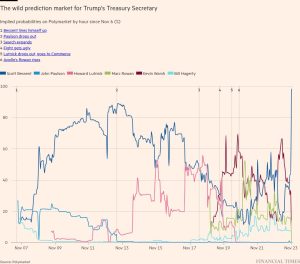Investing in Ukraine’s homegrown defence industry could help the west
Stay informed with free updates
Simply sign up to the War in Ukraine myFT Digest — delivered directly to your inbox.
This week, western allies are pledging fresh support for Ukraine. On Wednesday, US President Joe Biden announced another $425mn in military aid, rushed through before the election in November.
Separately, Australia announced it would send 49 of its old Abrams tanks. And with Volodymyr Zelenskyy, Ukrainian president, now touting a multi-part “victory plan” at an EU summit, more donations of equipment may materialise soon.
This is welcome — albeit shamefully far short of the support that Ukraine needs to win the war. However, as Zelenskyy begs for more help, there is another aspect of this that has hitherto been largely overlooked: the need for private and public capital for Ukraine’s own defence industry.
This matters because Ukraine’s homegrown military start-up scene has recently exploded in size and ambition: Oleksandr Kamyshin, a Zelenskyy adviser, tells me that there are now 200 ventures inside Ukraine which are capable of producing $20bn of equipment this year, and $30bn next.
Their products are not just innovative — artificial intelligence-enabled drones, for example — but also relatively cheap. Take an outfit called Madyar’s Birds, created by a former agricultural entrepreneur and politician called Robert Brovdi. The venture employs around a thousand people to make drones and shells inside Ukraine. “Items which cost the Americans $1,200 [to make] we do for $58,” says Brovdi. “Within six months the war will become pilotless, because we are using AI to replace human operators [of planes].”
However, Brovdi says he has a dire lack of working capital. He is not alone: Kamyshin says the Kyiv government is so cash-strapped that it only has $10bn of military procurement funds this year, creating a $10bn funding gap.
Is there any solution? The Ukrainian government recently started to consider lifting an export ban on its defence groups, in a desperate bid to raise their revenues. However this is potentially self-defeating, given that Ukraine’s army badly needs that kit. So a far more sensible solution would be for western allies to earmark some of the aid they are giving to Ukraine say from frozen Russian assets, to provide funding for its defence start-ups, on top of recycling old western kit. Such investments would not just help Ukraine but also help the west to rethink its own defence production.
This is critical. As former Google chief Eric Schmidt recently noted, the innovations emerging in Ukraine are changing the nature of war in a way that might make the expensive investments that western governments have hitherto made look increasingly redundant.
One country has already acted on this logic: Denmark recently agreed a DKK4.2bn investment in Ukrainian weapons and tech. Troels Lund Poulsen, Danish defence minister, says he now hopes to create a €1bn pan-EU fund. “It is much cheaper to produce [kit] here in Ukraine,” he told a conference in Kyiv last month. “The way forward is to encourage more European countries to finance production in Ukraine . . .”
There are hopes that this will eventually encourage private sector investment in Ukraine too. After all, TechCrunch calculates that $1bn of venture capital will be invested in Europe’s defence sector this year. But this still falls short of the VC funds being thrown into America, and 66 per cent of the funding for Europe emanates from American investors. However, defence start-ups are mushrooming in countries such as the UK and Germany.
And while European asset managers have traditionally shied away from defence investments, this attitude is now shifting slowly. The European Commission is encouraging this and a recent blog from the Principles for Responsible Investing group suggests that a third of European and UK-based ESG funds are invested in defence; it was a quarter in early 2022.
And Denmark recently pioneered another first: its pension funds are investing DKK40bn in Danish warships. This is striking, given the country’s long-standing ESG focus, and may encourage other European asset managers.
The other thing to watch, however, is the European Investment Bank. It currently focuses on civilian infrastructure projects. But, as Heidi Crebo-Rediker argues, the EIB could be a natural source of funding for Ukraine’s start-up defence scene — or it could be if European politicians accept the principle that defending Ukraine is crucial for the wider defence of Europe and its democratic ideals.
None of this will necessarily be much comfort for Zelenskyy right now. Even if European asset managers are becoming more willing to back defence investments, few would countenance doing that in Ukraine — at least not yet. And even if the EIB blazes a trail, as I think it should, that will take time.
But the key point is that America and Europe need to get more creative in how they support Kyiv. Where Denmark has gone, larger western states should now follow — not just for Ukraine’s sake, but for their own long-term security too.
#Investing #Ukraines #homegrown #defence #industry #west





